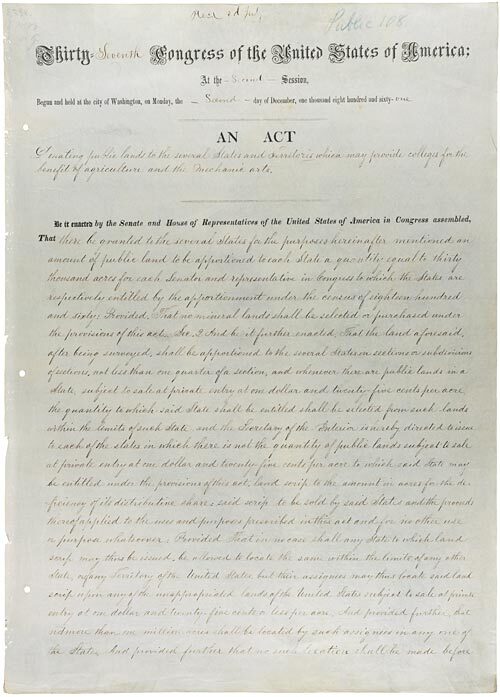Contents
The Morrill Land-Grant Acts
On July 2, 1862, the Morrill Act was passed, allowing for the establishment of new public colleges in the US. These colleges were built using money from the sale of federal land grants. While this did allow for more American students to attend university, the land that these schools were built on had mainly been seized from various Native communities across the US. Although some tribes did sign Treaties and agreements, these negotiations were most likely far from civil. Additionally, the schools were not equally inviting to all students. Black and Indigenous students, as well as other people of color, were not afforded the same educational opportunities as their white peers. Years later, in 1890, a second Morrill Act was passed, which began the process of creating the first historically Black and Native American higher education institutions.
Today, many of these land grant universities still operate. The University of Illinois at Urbana-Champaign, along with many others, were originally funded by the sale of Indigenous lands.
Learn more about land grant instutitions:
UIUC History
Carlos Montezuma, also known by his birth name Wassaja, became the first Native American student to graduate from The University of Illinois in 1884. After graduating he became an activist and a founding member of the Society of American Indians.
Land Acknowledgement
Many land grant institutions (as well as other institutions and even individuals) choose to include land acknowledgement statements in promotional material, at meetings, or in other situations to emphasize and reiterate the history of unfair land seizure.
The University of Illinois Urbana-Champaign recognizes the land acknowledgement statement is an expression of gratitude and appreciation to those on whose territory we reside, and a way of honoring the Native peoples who have been living and working on the land from time immemorial.
More resources on land acknowledgement:



